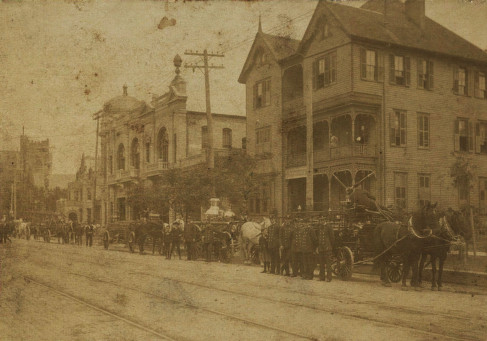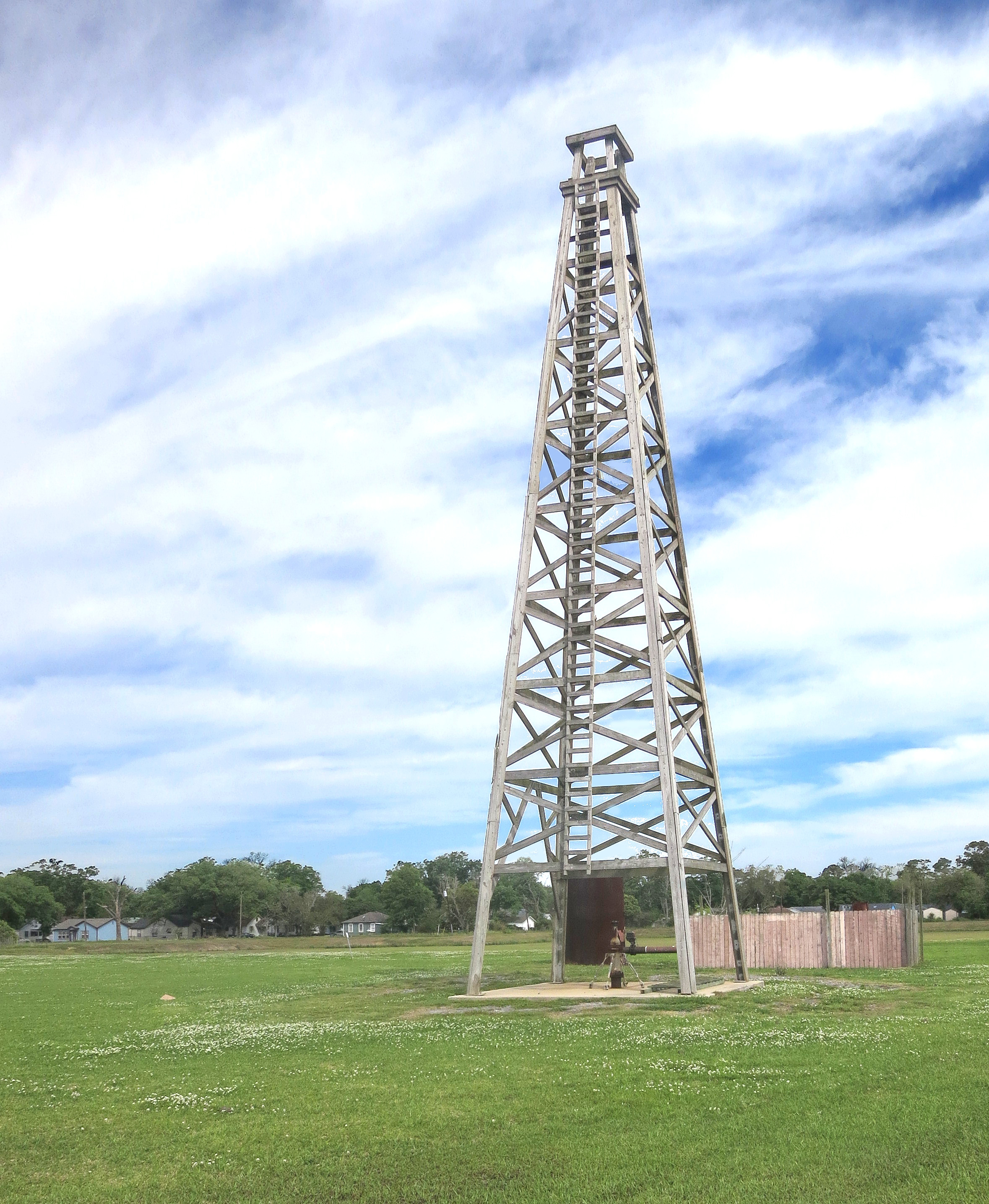|
Morgan's Point, Texas
Morgan's Point is located 30 miles east of Houston in Harris County, Texas, United States, located on the shores of Galveston Bay at the inlet to the Houston Ship Channel, near La Porte and Pasadena. As of the 2010 census, it had a population of 339. , it has approximately 356 residents and is located within the La Porte Independent School District. Morgan's Point National Historic District includes the "Carriage House" otherwise known as City Hall, and the Governor Ross S. Sterling mansion directly across the street; as well as several other notable properties. It earned fame in Texas's early history for being the home of the legendary Emily West (Morgan), known as "The Yellow Rose of Texas". It later became a Houston-area resort community for the wealthy in the early 20th century. History The area was first settled in 1822 by Nicholas Rightor, a surveyor commissioned by Stephen F. Austin to explore and survey the areas between the Brazos and Lavaca rivers. He soon sold ... [...More Info...] [...Related Items...] OR: [Wikipedia] [Google] [Baidu] |
Harris County, Texas
Harris County is a county located in the U.S. state of Texas; as of the 2020 census, the population was 4,731,145, making it the most populous county in Texas and the third most populous county in the United States. Its county seat is Houston, the largest city in Texas and fourth largest city in the United States. The county was founded in 1836 and organized in 1837. It is named for John Richardson Harris, who founded the town of Harrisburg on Buffalo Bayou in 1826. According to the July 2021 census estimate, Harris County's population has shifted to 4,728,030 comprising over 16% of Texas's population. Harris County is included in the nine-county Houston–The Woodlands–Sugar Land metropolitan statistical area, which is the fifth-most populous metropolitan area in the United States. History Human remains date habitation to about 4000 BC. Other evidence of humans in the area dates from about 1400 BC, 1 AD, and later in the first millennium. The region became uninhabited ... [...More Info...] [...Related Items...] OR: [Wikipedia] [Google] [Baidu] |
The Yellow Rose Of Texas (legend)
Emily D. West (c.1815–1891), also known as Emily Morgan, is a folk heroine whose legendary activities during the Texas Revolution have come to be identified with the song " The Yellow Rose of Texas". Biography West was a free woman of color, of mixed race, or a "high yellow". She was born in New Haven, Connecticut. In 1835 she was contracted to James Morgan in New York to work as an indentured servant for one year in Morgan's Point, Texas, at the New Washington Association's hotel as a housekeeper. Several months into her year of indentureship, on April 16, 1836, West and other residents were kidnapped by Mexican cavalry. West was forced to travel with the forces of General Antonio López de Santa Anna as they prepared to face the army led by Sam Houston, and was in the Mexican camp on April 21 when Houston's force attacked. The Texans won the Battle of San Jacinto in 18 minutes. According to legend, Santa Anna had been caught unprepared because he was having sex with West. N ... [...More Info...] [...Related Items...] OR: [Wikipedia] [Google] [Baidu] |
Texas Oil Boom
The Texas oil boom, sometimes called the gusher age, was a period of dramatic change and economic growth in the U.S. state of Texas during the early 20th century that began with the discovery of a large petroleum reserve near Beaumont, Texas. The find was unprecedented in its size (worldwide) and ushered in an age of rapid regional development and industrialization that has few parallels in U.S. history. Texas quickly became one of the leading oil-producing states in the U.S., along with Oklahoma and California; soon the nation overtook the Russian Empire as the top producer of petroleum. By 1940 Texas had come to dominate U.S. production. Some historians even define the beginning of the world's Oil Age as the beginning of this era in Texas. The major petroleum strikes that began the rapid growth in petroleum exploration and speculation occurred in Southeast Texas, but soon reserves were found across Texas and wells were constructed in North Texas, East Texas, and the Permia ... [...More Info...] [...Related Items...] OR: [Wikipedia] [Google] [Baidu] |
Spindletop
Spindletop is an oil field located in the southern portion of Beaumont, Texas, in the United States. The Spindletop dome was derived from the Louann Salt evaporite layer of the Jurassic geologic period. On January 10, 1901, a well at Spindletop struck oil ("came in"). The Spindletop gusher blew for 9 days at a rate estimated at of oil per day., Texas State Historical Association Gulf Oil and Texaco, now part of Chevron Corporation, were formed to develop production at Spindletop. The Spindletop discovery led the United States into the oil age. Prior to Spindletop, oil was primarily used for lighting and as a lubricant. Because of the quantity of oil discovered, burning petroleum as a fuel for mass consumption suddenly became economically feasible. The frenzy of oil exploration and the economic development it generated in the state became known as the Texas oil boom. The United States soon became the world's leading oil producer. __TOC__ History Pattillo Higgins sought a so ... [...More Info...] [...Related Items...] OR: [Wikipedia] [Google] [Baidu] |
Baytown, Texas
Baytown is a city in the U.S. state of Texas, within Harris and Chambers counties. Located in the Houston–The Woodlands–Sugar Land metropolitan statistical area, it lies on the northern side of the Galveston Bay complex near the outlets of the San Jacinto River and Buffalo Bayou. It is the sixth-largest city within this metropolitan area and seventh largest community (including The Woodlands CDP). Major highways serving the city include State Highway 146 and Interstate 10. At the 2020 U.S. census, Baytown had a population of 83,701, and it had an estimated population of 78,393 in 2021. History White American settlers first arrived in the now-Baytown area in 1822. One of its earliest settlers was Nathaniel Lynch, who set up a ferry crossing at the junction of the San Jacinto River and Buffalo Bayou. The still-operating ferry service is known as the Lynchburg Ferry. Other early settlers of Baytown included William Scott, one of Stephen F. Austin's Old Three Hundred, and ... [...More Info...] [...Related Items...] OR: [Wikipedia] [Google] [Baidu] |
Antonio Lopez De Santa Anna
Antonio is a masculine given name of Etruscan origin deriving from the root name Antonius. It is a common name among Romance language-speaking populations as well as the Balkans and Lusophone Africa. It has been among the top 400 most popular male baby names in the United States since the late 19th century and has been among the top 200 since the mid 20th century. In the English language it is translated as Anthony, and has some female derivatives: Antonia, Antónia, Antonieta, Antonietta, and Antonella'. It also has some male derivatives, such as Anthonio, Antón, Antò, Antonis, Antoñito, Antonino, Antonello, Tonio, Tono, Toño, Toñín, Tonino, Nantonio, Ninni, Totò, Tó, Tonini, Tony, Toni, Toninho, Toñito, and Tõnis. The Portuguese equivalent is António (Portuguese orthography) or Antônio (Brazilian Portuguese). In old Portuguese the form Antão was also used, not just to differentiate between older and younger but also between more and less important. In Galician t ... [...More Info...] [...Related Items...] OR: [Wikipedia] [Google] [Baidu] |
Indentured Servant
Indentured servitude is a form of labor in which a person is contracted to work without salary for a specific number of years. The contract, called an " indenture", may be entered "voluntarily" for purported eventual compensation or debt repayment, or it may be imposed as a judicial punishment. Historically, it has been used to pay for apprenticeships, typically when an apprentice agreed to work for free for a master tradesman to learn a trade (similar to a modern internship but for a fixed length of time, usually seven years or less). Later it was also used as a way for a person to pay the cost of transportation to colonies in the Americas. Like any loan, an indenture could be sold; most employers had to depend on middlemen to recruit and transport the workers so indentures (indentured workers) were commonly bought and sold when they arrived at their destinations. Like prices of slaves, their price went up or down depending on supply and demand. When the indenture (loan) was paid ... [...More Info...] [...Related Items...] OR: [Wikipedia] [Google] [Baidu] |
Mulatto
(, ) is a racial classification to refer to people of mixed African and European ancestry. Its use is considered outdated and offensive in several languages, including English and Dutch, whereas in languages such as Spanish and Portuguese is not, and can even be a source of pride. A () is a female ''mulatto''. Etymology The English term and spelling ''mulatto'' is derived from the Spanish and Portuguese . It was a common term in the Southeastern United States during the era of slavery. Some sources suggest that it may derive from the Portuguese word (from the Latin ), meaning ' mule', the hybrid offspring of a horse and a donkey. The Real Academia Española traces its origin to in the sense of hybridity; originally used to refer to any mixed race person. The term is now generally considered outdated and offensive in non-Spanish and non-Portuguese speaking countries, and was considered offensive even in the 19th century. Jack D. Forbes suggests it originated in the Arabi ... [...More Info...] [...Related Items...] OR: [Wikipedia] [Google] [Baidu] |
Texian
Texians were Anglo-American residents of Mexican Texas and, later, the Republic of Texas. Today, the term is used to identify early settlers of Texas, especially those who supported the Texas Revolution. Mexican settlers of that era are referred to as Tejanos, and residents of modern Texas are known as Texans. History Colonial settlement Many different immigrant groups came to Texas over the centuries. Spanish colonists in the 17th century linked Texas to the rest of New Spain. French and English traders and settlers arrived in the 18th century, and more numerous German, Dutch, Swedish, Irish, Scottish, Scots-Irish, and Welsh immigrated in the years leading up to Texas independence in 1836. Before Texas became a sovereign nation in 1836, Texian referred to any resident, of any color or language. In 18341836, the Texian Army was organized for the Texas Revolution of independence from Mexico, a nation which had won its independence from Spain in 1821. The Texian Army was a ... [...More Info...] [...Related Items...] OR: [Wikipedia] [Google] [Baidu] |
Lemon
The lemon (''Citrus limon'') is a species of small evergreen trees in the flowering plant family Rutaceae, native to Asia, primarily Northeast India (Assam), Northern Myanmar or China. The tree's ellipsoidal yellow fruit is used for culinary and non-culinary purposes throughout the world, primarily for its juice, which has both culinary and cleaning uses. The pulp and rind are also used in cooking and baking. The juice of the lemon is about 5% to 6% citric acid, with a pH of around 2.2, giving it a sour taste. The distinctive sour taste of lemon juice makes it a key ingredient in drinks and foods such as lemonade and lemon meringue pie. History The origin of the lemon is unknown, though lemons are thought to have first grown in Assam (a region in northeast India), northern Myanmar or China. A genomic study of the lemon indicated it was a hybrid between bitter orange (sour orange) and citron. Lemons are supposed to have entered Europe near southern Italy no later tha ... [...More Info...] [...Related Items...] OR: [Wikipedia] [Google] [Baidu] |
Lavaca River
The Lavaca River ( ) is a navigable river in the U.S. state of Texas. It begins in the northeastern part of Gonzales County, and travels generally southeast for until it empties into Lavaca Bay, which is a component of Matagorda Bay. History The navigable Texas river's name is a corruption of Rivière des Vaches ("Cow River"), by French explorer René-Robert Cavelier, Sieur de La Salle. The flagship of Jean Laffite's fleet was alleged to have been scuttled in the lower part of the river. Economy Hallettsville, and Moulton, Texas, are included this river section's river authority is Lavaca-Navidad River Authority, which was established in 1941. See also * List of rivers of Texas * Port Lavaca, Texas Port Lavaca () is a city in Calhoun County, Texas, Calhoun County, located in the U.S. state of Texas. The population was 12,248 at the 2010 census and 11,557 at the 2020 census. It is the county seat of Calhoun County and part of the Victoria, Te ... Notes Rivers of Tex ... [...More Info...] [...Related Items...] OR: [Wikipedia] [Google] [Baidu] |


.jpg)





